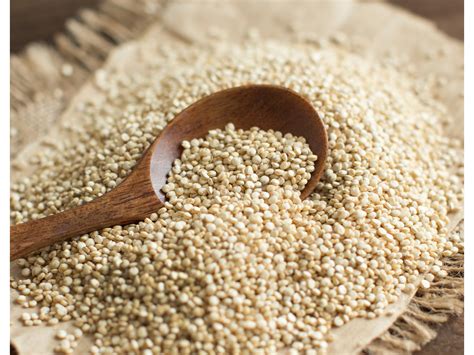$2.85/lb.
Amaranth has been cultivated for millennia. The plants are classified as pseudocereals, grown for their edible starchy seeds, but they are not true cereals, such as wheat and rice. Amaranthus caudatus L., Amaranthus cruentus L., and Amaranthus hypochondriacus L. are the varieties grown for food. The yield of grain amaranth is comparable to rice or maize.
Amaranth grain was a staple food of the Aztecs and an integral part of Aztec religious ceremonies. Grain amaranth is grown as a food crop in limited areas of Mexico, where it is used to make a candy called alegría (Spanish for joy) at festival times. In other preparations, the grain can be popped like popcorn and then either mixed with honey, or served with milk, dried fruit and nuts like a cold breakfast cereal. Amaranth grain can also be used to extract amaranth oil, a pressed seed oil.
Nutritional analysis:
Amaranth grain needs to be cooked. It cannot be eaten raw. It is inedible to humans because it cannot be digested, thus blocking the absorption of nutrients. 100-gram (3 and 1⁄2-ounce) of cooked amaranth provides 430 kilojoules (103 kilocalories) of food energy and is a moderately rich source of dietary minerals, including phosphorus, manganese, and iron. Cooked amaranth is 75% water, 19% carbohydrates, 4% protein, and 2% fat.
Amaranth grain is also high in protein and lysine, an amino acid found in low quantities in other grains, but it is deficient in essential amino acids such as leucine and threonine – both of which are present in wheat germ. Amaranth grain is gluten-free.

